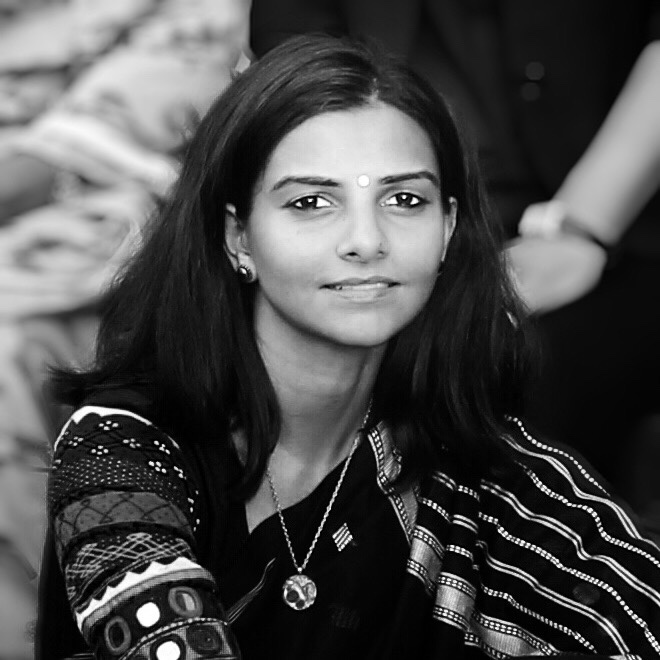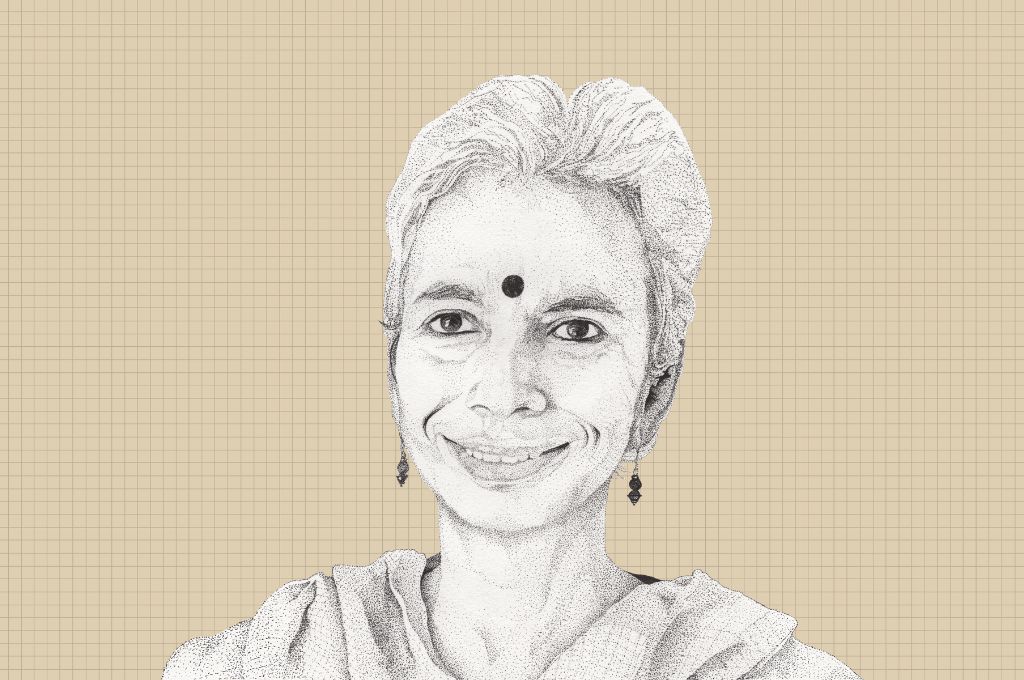Professor Shantha Sinha has been an anti-child labour activist for the past 35 years, and was among the earliest voices in the country fighting for the rights of children to attain a formal education. She is the founder of Mamidipudi Venkatarangaiya Foundation (MVF), and a professor in the Department of Political Science at Hyderabad Central University. Shantha’s efforts have resulted in policy change at the national and state level, and more than 1,000 villages across the state of Telangana are child-labour free today, due to the work of her foundation. MVF has since scaled its work nationally and globally.
Shantha headed the National Commission for Protection of Child Rights, and has been awarded a Padma Shri by the Government of India (1998), and the prestigious Ramon Magsaysay Award (2003).
Could you tell us a little about your early years?
I’ll begin in the late 1960s, which was a time when everyone was charged with the idea of a revolution. That was the climate of that era; no student could escape it, and I am glad for that.
In 1972 I was in Jawarhal Nehru University (JNU) for my PhD. It was here that I met students who were actively engaged in debates on topics ranging from the strength of Indian democracy, constitutional principles, the Nehruvian idea of change, Gandhian nationalist ideals, and Ambedkar’s politics, as well as a more nuanced Marxist understanding of change. I ultimately did my PhD on Naxal politics in Andhra Pradesh.
I was later recruited as a lecturer at the University of Hyderabad. I was teaching a course on rural politics; until then, I had had no direct exposure to rural India and village society. My teachings were based on the studies of scholars who had written about rural politics. I thought that apart from teaching, I must also learn more about the struggles of the working class in rural and urban India.
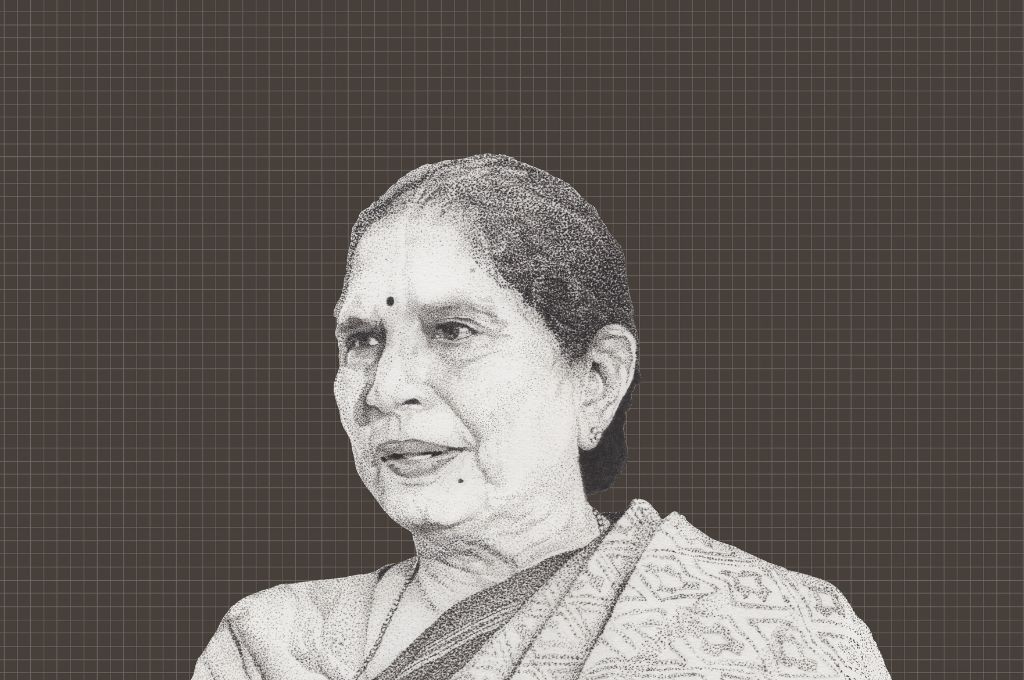
Around that time, there was a central government scheme for setting up Shramik Vidyapeeths, which were centres for adult education that targeted workers in urban and industrial areas. Since universities could apply, I submitted a proposal. When it was accepted, I was made director and was deputed from the university to work there.
How did you start working on children’s rights?
My friend Gita Ramaswamy, who at the time was working in the Ibrahimpatnam Vyavasay Cooolie Sangha, was organising agricultural labourers into unions and fighting for the liberation of bonded labourers. I went to see her work; that’s how it all began.
While working towards the release of bonded labourers, I found out that 40 percent of them were children. There were rehabilitation programmes for released adult bonded labourers, through which they would receive a bullock cart, some land, and other such aid.
But what about the children?
Freeing labourers amounted to little more than an academic exercise, because the caste system and its oppression were so deeply ingrained.
Back then—in 1988-89—nobody was talking about children. What must be given to them as a rehabilitation programme? The focus at that time was largely on charity, homes for children, or rescue and raids to release children. Very few were talking about children’s rights, and their right to an education.
It was then that we started working with three villages. Through the Mamidipudi Venkatarangaiya Foundation (MVF)—setup in the memory of my grandfather—we withdrew 30 children who were bonded labourers. We faced a lot of resistance.
I realised then that freeing labourers amounted to little more than an academic exercise, because the caste system and its oppression were so deeply ingrained. Plus, if one batch of children was released, there was always another one to take its place. So, how could one prevent it entirely?
I felt that we needed an approach that didn’t leave behind debris of hatred and violence in the village. We had to create a model that built community support for children’s rights and won over people. We needed to build a social norm in favour of children, and so our focus shifted from addressing bonded labour to working for all children.
Related article: Why the rights way makes sense
Logically, this meant having a broader, more inclusive definition of labour. We knew that an out-of-school child, even if she was not employed in the labour force, would ultimately join it anyway. All other options would be closed for her, due to her lack of an education. She would also do domestic work—getting water, fuel, wood. So, we defined child labour as every child who is not in school.
What were the steps you took to change the prevailing social norm?
At the time the policy was that if children were working, they would attend night schools. This was unacceptable, so we had to convince nonprofits and the government that children have a right to be in formal, day schools.
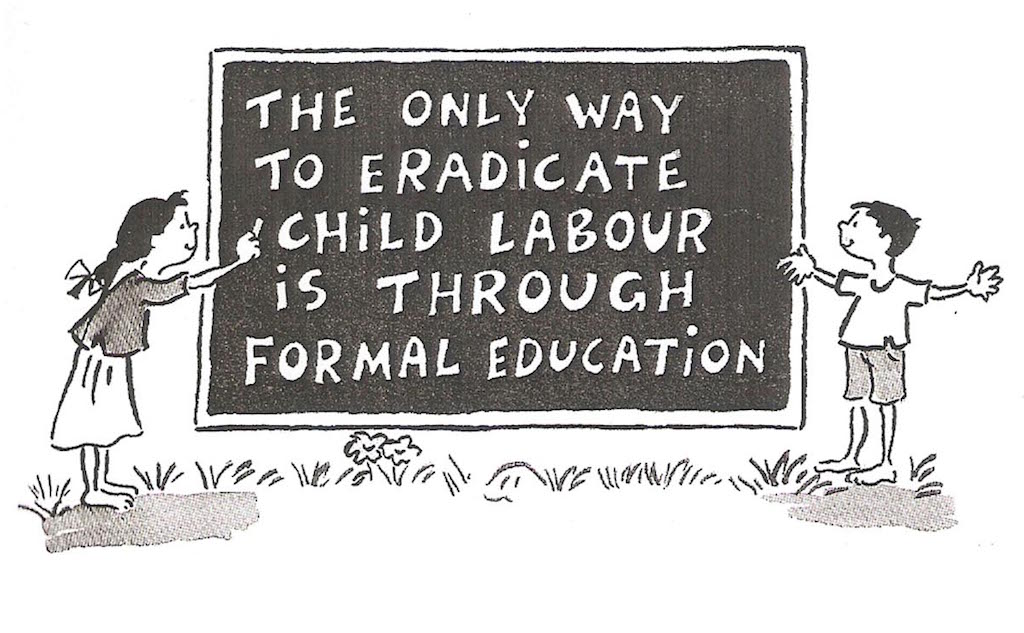
We mobilised the community on one side, and on the other, we engaged with employers and school teachers. Many teachers resisted because many of the older children could not read or write, and so they worried about the additional burden of new students, and how they would cope. Since the schools were not ready to accept them, MVF ran a residential bridge course. To our surprise, we found that within 90 days, most children could learn to read and write, and thus appear for the 7th standard board exam to be admitted back into school.
Meanwhile, we lobbied with the Andhra Pradesh government, who agreed with our stance and released a circular announcing the mandatory closure of all non-formal education (NFE) centres, or night schools, in the state. This was in many ways a big win, but it also faced resistance from those who argued that child labour was inevitable, because of poverty; and, families would collapse without children’s income. Nonprofits, the government, academics and global agencies such as the ILO, DFID and others held this view. Indeed, many in the establishment and governance of the NFE programme depended on the centres for their own livelihood, and thus had a vested interest in perpetuating the programme.
This must have been a difficult fight, because you were making a point about children’s rights that had negative consequences for those in the establishment. Can you tell us more about it?
Oh, it was. For me there was only one argument: children must not work because they have a right. There can’t be a bigger argument than this.
However for those people and institutions who weren’t convinced with this argument, we highlighted the fact that it was child labour that caused poverty, and not the other way around.
When girls didn’t work, women got better wages, and in turn there was more cash for them to use, and more cash for the family.
We showed how there was transformation in society once child labour no longer existed. For example we were working in 1,200 villages, where many of the young girls were employed in farms, plucking flowers, picking vegetables, and assisting with the harvest. They were cheap labour, and could be forced to work long hours. But as these girls began entering schools, there was a scarcity of labour, which their employers’ sought to address by asking the mothers to step in. These women agreed to work but only if they were paid three times their daughters’ wages (INR 27 per day instead of INR 9).
Related article: Anti-trafficking bill: Proposed law must take a child rights approach
In a study we conducted then, we found that wage rates went up to INR 45-50 per day for women. Thus, when girls didn’t work, women got better wages, and in turn there was more cash for them to use, and more cash for the family.
This was also the case with young boys who were employed as farm servants. When they were put in school, their fathers took their places, demanding better wages than the annual contract of five pots of grain that would otherwise be paid to their sons. With time, they moved to having an annual contract that went up to as much as INR 70,000 per year. Soon, employing men and full-time farm servants became so unaffordable that the practice ceased entirely. In many villages tractors replaced farm labour.
There were other spillover effects as well. Cropping patterns changed because owners began planting crops that needed less farm labour. Similarly, they changed how they grazed their cattle. So, we found that when children were working, everyone was poor. When they weren’t, parents got better wages and could negotiate with employers, and there were more jobs in the family.
We demonstrated that children were made to work because employers wanted cheap labour, not because parents wanted that income. In fact, we found that parents wanted nothing more than to educate their children. When we withdrew children from work, we did not compensate the families with any income. In fact, parents would invest in their children as students, buying books, clothes, and school supplies. I have always believed that when children become children, parents become parents.
There seems to have been great potential for conflict in the kind of work that MVF was doing. How did you navigate that to achieve your mission?
The path of a child to school is not without conflict. You have to either stop child marriage or child labour, which disturbs existing power relations and norms. In fact, we were itching for conflict, because where there is no resolving of conflicts, there is no possibility of changing a social norm. We saw this as two sides of the same coin, and therefore our approach was to discuss the issue of releasing a child from bonded labour, appeal to everyone, and build allies. We harmonised the village rather than polarising it.
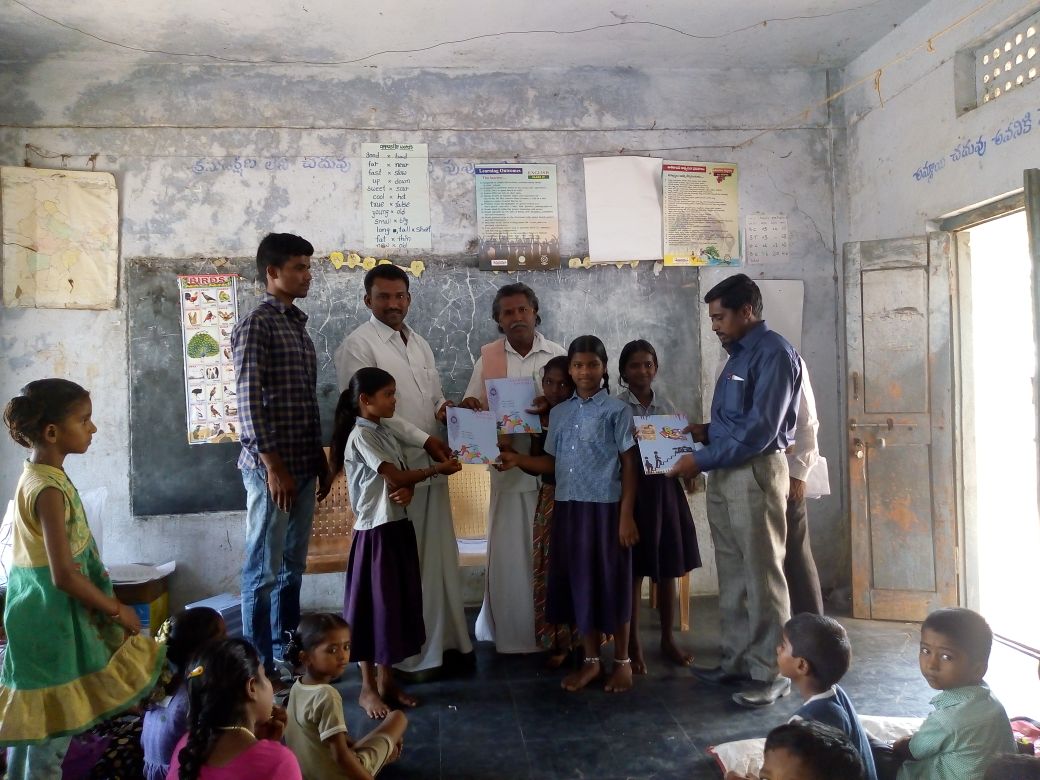
We decided not to distrust employers, because we believed that we weren’t the only ones who had a monopoly over goodness. So we began to dialogue with them; and when they supported us, we announced it to the newspapers. We worked hard to make school teachers—initially among our biggest opponents—partners.
The path of a child to school is not without conflict. You have to either stop child marriage or child labour, which disturbs existing power relations and norms.
We didn’t give up on parents or local authorities either. With time, the police began bringing abandoned children to us. One of the girls who was brought to us had run away from her family in Bihar. Today she works in the corporate sector, and when she returns home for vacation, she goes first to her police mama’s house.
All of this is to say that we have to dialogue. And if people are not on our side, it is a fault of ours, not theirs; we didn’t do enough to win them over.
Can you talk a little bit about what has resulted from this approach?
In 2012, in the 1200 villages in Telangana where we had operations, no child was at work. And all children completed their 10th standard. We are no longer present there, nor do we need to be because the norm has shifted. Locals believe that children must be in school. In fact, they don’t even recall a time when children never went to school. We have also seen many children enter the formal workforce.
MVF has also given technical support to the Madhya Pradesh government, working in 48 districts at one time. We still work in about six districts in Bihar, and have worked in other states as well, including Assam, Tamil Nadu, Uttar Pradesh, West Bengal, and Rajasthan. We were also able to scale our programme globally,1 partnering with the Stop Child Labour Campaign.
Related article: As India rethinks labour rules, it’s missing one topic from the agenda
From the beginning, MVF focused on protecting the rights of every child in a particular area. To do this we depended heavily on our field mobilisers, who have been the backbone of the movement in tracking all children, contacting all stakeholders, resolving conflicts, building consensus, and informing MVF about the issues that need policy changes. They are the strength of MVF today.
This is also why it was possible for me to step down, and hand over the reins to my team. In 2006, my staff asked me to retire. They said that as long as I was involved, they would not grow. My leaving would enable them to make their own choices, and their own mistakes. I thought it was a good idea, so I left. And till this day, the entire programme is run by the team. I work only as an advisor.
Where is India today when it comes to child rights?
If one goes by the statistics, there’s far less child labour than before. More children are in schools now than ever before. There is also an ongoing discourse surrounding the importance of children’s rights and the need for children to attend school. Yet, I think we have not won. People still think that if families are poor, why shouldn’t their children work?
In terms of the law, we have made huge strides. The RTE Act is a case in point, as is the child labour law. Earlier, this law abolished child labour among those working in hazardous industries only; but today, all children below the age of 14 are forbidden from being employed. If they are out of school, the law sees them as child labour.
We often think that we are giving back to society and doing our bit for the poor. In fact, we are not. We are not doing favours to anyone. We are doing our duty to deepen India’s democracy.
Some of our neighbours, including Pakistan and Bangladesh, have laws that distinguish between hazardous and non-hazardous industries. However in India, there is no such distinction for child labour. Moreover, the law covers children up to the age of 18 (for hazardous industries), unlike in other countries where the law applies until 16 years of age. These are major positive steps for India.
Having said that, a lot more needs to be done in terms of investment. And, we need a change in people’s attitudes. In particular, I think the elite—bureaucrats, and the business, political, and intellectual elite—have to speak up and take sides supporting children’s rights. Doing so would disturb the status quo, as it would involve each of us relinquishing some comforts. But, can there be any change in society without sacrifice?
If we are not willing to do this, nothing will change. And we need not view it as sacrifice, but as our contribution to bring about change. We often think that we are giving back to society and doing our bit for the poor. In fact, we are not. We are not doing favours to anyone. We are doing our duty to deepen India’s democracy. To elaborate, in addition to elections, voting rights, political participation, and freedom, democracy is about equality and social justice, and rights.
If, say 40 percent of children don’t finish class eight, then 40 percent of the country’s population is marginalised. How equal is our democracy, then?
- MVF gives technical support to nonprofits in African countries such as Kenya, Uganda, Ethiopia, Morocco, among others.


